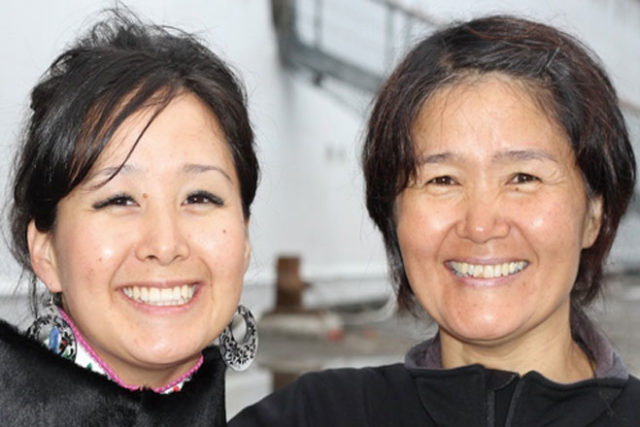
By David Yamaguchi
The North American Post
After writing articles here, I commonly learn more about the topics covered. Sometimes readers write in, completing the two-way conversation that this paper fosters. As readers, perhaps you similarly want to follow up on subjects you have read about in this space.
The Japanese Face
I left off exploring the geographic extent of Japanese-looking people with the Yupiks and Aleuts of western Alaska (June 2 issue). After that, however, my curiosity got the better of me. For if Inuit people (formerly known as Eskimo) had made it to Alaska, what was to stop their dog sleds from traversing the vastness of northern North America?
Through further perusing the Internet, I came across an Inuit daughter and mother pair in Greenland. Do they look as Japanese to you, dear reader, as they do to me?
Think of them as you don your winter gloves, and find that your stubby, cold-adapted fingers leave the last quarter-inch empty.

Tahoma Zen Monastery
On the topic of Buddhism, practitioners may have noticed that I incorrectly listed “Namu myoho renge kyo!” [Hail to the lotus sutra!] as a chant of Pure Land sects (Aug. 18). That chant is burned into my brain from attending memorial services for my grandmother during my childhood, as well as from hearing my aunt recite it nightly in the 1980s and 1990s in the 300 year-old Yamaguchi ancestral farmhouse in Fukui-ken, Japan. However, as pointed out to me by scholar Hiroko Malatesta, “Namu myoho” is Nichiren. The Pure-Land Buddhists, by contrast, say “Namu Amida Butsu” [I take refuge in Amida Buddha].
“Ebb and Flow”
Jerry Yamashita indeed attended the Oct. 9 debut screening of “Ebb and Flow, the Life Journey of Jerry (Eiichi) Yamashita” (Sept. 29). Sold out to a capacity crowd of 200 in the main screening room of the Varsity Theater on University Way, its local producers, Leaping Frog Films, now seek new venues in which to show it.
Outlets that come to my mind that are managed by readers or potential readers include the Nisei Veterans Hall, Keiro, the Oregon Nikkei Legacy Center, the Cherry Blossom Festival, and the Asian American Film Festival. DVDs are also available for purchase.
In considering the film for showing by nonprofit organizations, my opinion is that it is the finest documentary on the story of a Japanese-American family I have seen to date.
Many readers saw the superb recent documentary, “Seed, the Life of the Rice King and his Kin”) at the 2016 Cherry Blossom Festival. “Seed” describes the California Koda family that lies behind the Kokuho brand of Cal-Rose rice.
“Ebb and Flow” is better than “Seed.” What makes it so for me are its local Northwest flavor, the education it provides about how native Japanese oysters, now termed “Pacific oysters,” came to dominate the circum-Pacific oyster market, and the persistence (“gaman”) of the Yamashita family in overcoming one setback after another.
Also amazing is the respect shown the Yamashita family by oyster industry professionals today. The latter include Caucasian oystermen, who continue to care for the descendants of the original oysters brought by the Yamashitas and others in the 1920s and 1930s, managers of seafood shops in the Pike Place Market, chefs in high-end Seattle restaurants, and the native tribe that purchased the Yamashita oyster farm near Purdy. For the natives especially, the oysters provide a means for them to earn a living in the spirit of traditional ways.




